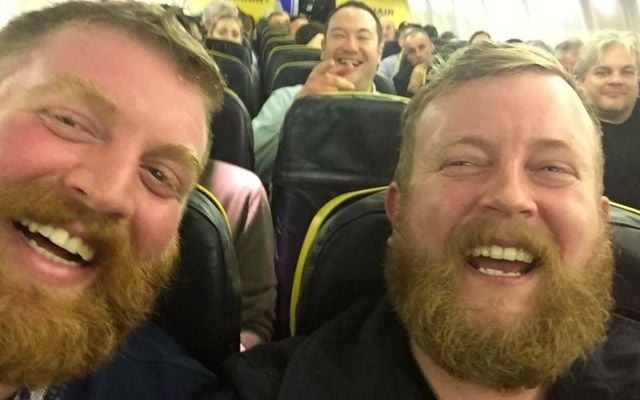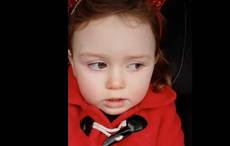A man met his doppelgänger on a Ryanair flight to Shannon Airport back in 2015.
Neil Thomas Douglas and his "twin stranger" Robert Stirling found themselves sitting together on the flight and couldn't believe the resemblance. The two took a selfie together and a friend of Douglas's wife posted the image to social media.
The image was uploaded by Lee Beattie, who wrote: “The guy on right is the husband of my friend. The guy on left is a STRANGER he met on a flight last night!”
Guy on right is the husband of my friend @elrottencrotch. Guy on left is a STRANGER he met on a flight last night! pic.twitter.com/kwBFOOEoMc
— Lee Beattie (@leebeattie) October 30, 2015
The two men would encounter one another again when they checked into the same hotel in Galway and yet again when they bumped into each other in a pub.
Neil said: "Later that night, I went to the pub and again, there was my twin. Total weirdness.
"We had a laugh and a pint."
@leebeattie @elrottencrotch The love affair continued post flight #BeardTwins pic.twitter.com/PDeqp73S6Q
— Ross Hunt (@RossJamesHunt) October 30, 2015
Many social media users have commented on the uncanny likeness, calling it “spooky.”
They aren't the only Irish people to find their utter resemblance in a strange way, however. In the summer of 2015, three Irish friends set themselves the challenge of finding the seven doppelgangers we apparently all have around the world. The Twin Strangers project brought about some really weird cases of those who have no blood relation looking exactly alike.
What are the chances?
It is difficult to provide an exact statistical probability of bumping into your doppelgänger, as it depends on various factors such as population size, genetic diversity, and personal circumstances. However, we can try to estimate the chances based on a simplified approach.
Let's consider a hypothetical scenario where we assume a population of 7.9 billion people (as of 2021) and that each person has an equal chance of having a doppelgänger within that population.
If we assume that each person has only one doppelgänger (an extreme simplification), the chances of randomly encountering your doppelgänger would be 1 in 7.9 billion.
However, it's important to note that this estimate doesn't account for genetic variations, regional clustering of physical traits, cultural factors, or other variables that affect the likelihood of finding a doppelgänger. Moreover, the concept of a doppelgänger implies more than just physical resemblance—it involves similarities in appearance, mannerisms, and other characteristics.
In reality, the chances of encountering someone who looks remarkably similar to you might be slightly higher than the simplified estimate, especially if you consider shared ancestry, geographic proximity, or other factors that could increase the likelihood of finding a lookalike.
* Originally published in 2015. Updated in May 2023.




Comments